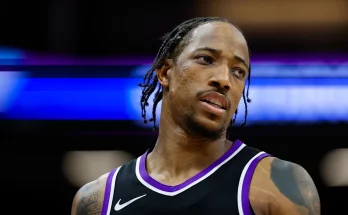In a stunning development that has sent ripples throughout the college basketball landscape, the South Carolina Gamecocks have officially secured the commitment of the nation’s No. 1 high school basketball prospect. This landmark decision is more than just a headline-grabbing announcement; it signifies a major shift in the recruiting dynamics of college basketball, demonstrating that programs previously perceived as underdogs can now compete at the highest levels for elite talent. Historically, South Carolina has been respected within collegiate sports circles, but its basketball program has often taken a backseat to traditional powerhouses such as Tennessee, Alabama, Kentucky, and more recently, BYU, in terms of consistently landing top-tier recruits. The arrival of the country’s premier prospect, however, alters that narrative, signaling to the basketball world that the Gamecocks are no longer just contenders—they are a destination program capable of competing for championships.
The decision by the nation’s top prospect to commit to South Carolina over high-profile programs like Tennessee, BYU, and Alabama is a testament to the Gamecocks’ strategic recruiting vision. Tennessee, long established as a dominant force within the Southeastern Conference (SEC), has historically attracted some of the best talent in the region, leveraging its national visibility and track record of developing NBA-ready players. BYU, on the other hand, offers a unique blend of exposure and cultural appeal that has drawn top athletes seeking both competitive basketball and a distinctive collegiate experience. Alabama, a program synonymous with excellence in football, has steadily built its basketball brand, positioning itself as a rising threat in college hoops with robust recruiting and state-of-the-art facilities. Despite these compelling options, the top prospect’s choice of South Carolina underscores a nuanced set of considerations that go beyond mere prestige.
At the core of this commitment is the Gamecocks’ clearly articulated vision for their program. The coaching staff has worked meticulously to present a pathway that emphasizes not just individual player development, but the cultivation of a team culture that blends competitiveness, accountability, and championship aspirations. South Carolina’s approach to recruitment focuses on fostering a sense of ownership and leadership within its athletes, ensuring that they are not merely joining a team, but actively shaping its identity and legacy. For the nation’s No. 1 prospect, this vision evidently resonated, offering a platform where exceptional talent could thrive, make a significant impact immediately, and contribute to a rising program poised for national relevance.
The impact of this signing extends well beyond a single player. In the highly competitive arena of college basketball recruiting, securing the top-ranked high school athlete serves as both a symbolic and practical boost to a program’s profile. Symbolically, it signals to the national basketball community—including other recruits, coaches, and analysts—that South Carolina is capable of competing for elite talent, challenging the traditional hierarchy that has long favored programs with more established basketball pedigrees. Practically, it strengthens the Gamecocks’ roster immediately, providing a transformative presence that can shift on-court dynamics, elevate team performance, and attract additional top-tier recruits in subsequent cycles. Historically, programs that secure the nation’s top prospect often experience a ripple effect, with momentum fueling further high-level commitments and increasing media attention.
Analysts and fans alike have expressed a mix of surprise and admiration regarding this commitment. South Carolina was not widely considered the front-runner for this player, and the decision to choose the Gamecocks over perennial powerhouses represents a notable upset in recruiting expectations. For many observers, the choice challenges preconceived notions about where elite talent is likely to go, demonstrating that a compelling vision and a supportive environment can outweigh the traditional allure of high-profile programs. The recruit’s decision also reflects a broader trend in college basketball: top athletes are increasingly valuing program culture, development opportunities, and the potential to make an immediate impact over historical prestige alone.
From a programmatic standpoint, this commitment signals a turning point for South Carolina basketball. In recent years, the Gamecocks have steadily built a reputation for competitiveness and strategic growth. By landing the nation’s top prospect, they now have an opportunity to accelerate that trajectory, positioning themselves as a legitimate contender not only within the SEC but on the national stage. The implications for the team’s future roster are significant. With a top-tier talent at the helm, South Carolina can attract additional recruits seeking to join a program on the rise, create more competitive depth, and potentially shift the balance of power within the conference. The commitment also enhances the program’s ability to compete in high-stakes tournaments, including the NCAA tournament, where the presence of elite talent can make the difference between early exits and deep runs.
Recruiting the nation’s No. 1 prospect also carries broader implications for the perception of South Carolina basketball. Historically overshadowed by programs with longer-standing reputations or more extensive media coverage, the Gamecocks now have a national spotlight shining directly on their program. Media narratives will undoubtedly emphasize this achievement, framing South Carolina as a rising force capable of challenging traditional hierarchies. This increased attention benefits the program in multiple ways: it can boost fan engagement, increase attendance at games, and enhance the overall brand appeal of the team. Furthermore, it sends a strong message to future recruits that South Carolina is a serious destination for players seeking to maximize both their development and their exposure on the national stage.
The decision by the top prospect also reflects the effectiveness of South Carolina’s recruiting strategy. Successful recruitment at this level requires more than just outreach and promises; it necessitates the cultivation of trust, the presentation of a compelling vision, and the demonstration of a tangible pathway for growth and success. South Carolina’s staff appears to have executed this strategy flawlessly, creating an environment where the nation’s top player felt both valued and empowered. This ability to connect with elite talent on a personal and professional level sets the program apart and underscores the sophistication and intentionality behind its recruitment efforts.
Looking ahead, the ripple effects of this commitment will likely extend into multiple dimensions of the program’s operations. On the court, the Gamecocks can expect an immediate infusion of talent, athleticism, and leadership. Off the court, the program’s elevated profile will attract additional recruits, media attention, and potentially increased support from alumni and boosters. Strategically, the program can leverage this signing to further solidify its position within the SEC, challenging long-standing power structures and asserting itself as a destination for elite talent. This convergence of talent, vision, and strategic planning positions South Carolina basketball for sustained success in the coming years.
Equally important is the signal this commitment sends to other high school athletes evaluating their collegiate options. By choosing South Carolina, the nation’s top prospect has demonstrated that factors such as program vision, development opportunities, and cultural fit can outweigh historical prestige. This may encourage other elite athletes to consider programs that have previously been overlooked, potentially reshaping the landscape of college basketball recruiting. Programs like South Carolina, which combine competitive ambition with a clear developmental pathway, may find themselves increasingly attractive to top-tier talent seeking both immediate impact and long-term growth.
In conclusion, the South Carolina Gamecocks’ acquisition of the nation’s No. 1 high school basketball prospect represents a watershed moment in the history of the program. The commitment not only elevates the team’s roster but also enhances its national profile, strengthens recruiting momentum, and positions South Carolina as a rising powerhouse capable of competing with traditional elite programs. By securing this historic talent over Tennessee, BYU, and Alabama, the Gamecocks have demonstrated that vision, culture, and strategic planning can prevail in the highly competitive world of college basketball recruiting. As the program continues to build on this momentum, the Gamecocks are poised to redefine expectations, inspire future recruits, and establish themselves as a formidable force on both the conference and national stages. The decision of the nation’s top prospect is more than just a personal choice; it is a defining moment for South Carolina basketball, signaling the dawn of a new era marked by ambition, excellence, and national relevance.
The arrival of this elite player is likely to have long-lasting effects that go beyond wins and losses. It serves as a beacon for the program’s future, highlighting the Gamecocks’ ability to attract and nurture talent capable of competing at the highest levels. As the basketball season approaches, fans, analysts, and competitors alike will be watching closely to see how this historic signing translates into on-court success. The commitment of the nation’s No. 1 prospect is not merely a recruiting victory; it is a declaration that South Carolina basketball has arrived, ready to challenge conventions, inspire confidence, and carve out its place among the nation’s elite programs.
In the broader context of college basketball, this development exemplifies the evolving nature of recruiting. It underscores the importance of program culture, player development, and strategic vision in attracting elite talent. The Gamecocks’ success in this arena may serve as a blueprint for other programs seeking to compete for top recruits, emphasizing that a combination of ambition, authenticity, and opportunity can tip the scales in unexpected ways. As South Carolina embarks on this new chapter, the basketball world will undoubtedly take note, recognizing that the Gamecocks are no longer just participants in the recruiting landscape—they are leaders, innovators, and legitimate contenders for national prominence.
This historic commitment will be remembered as a turning point for the South Carolina basketball program. It validates years of effort, strategic planning, and cultural cultivation, signaling that the Gamecocks are ready to compete with the best and to leave an indelible mark on college basketball. With the nation’s top prospect now donning the garnet and black, South Carolina is poised to redefine its trajectory, inspiring future generations of athletes and fans alike. The era of South Carolina basketball as a rising powerhouse has officially begun, and the nation will be watching closely as the Gamecocks translate this historic recruiting victory into tangible success on the court.



